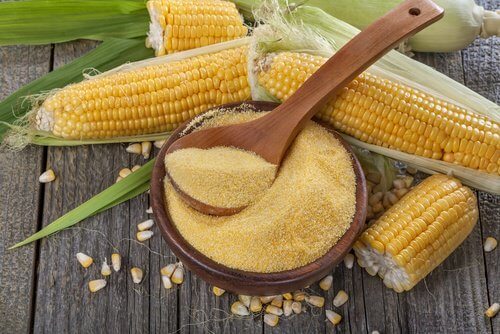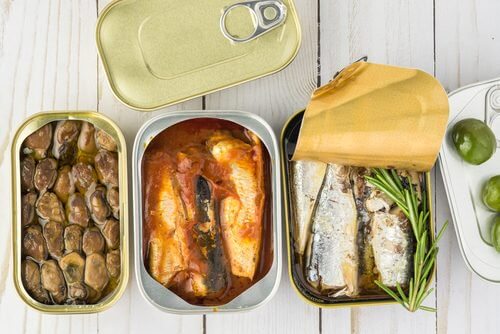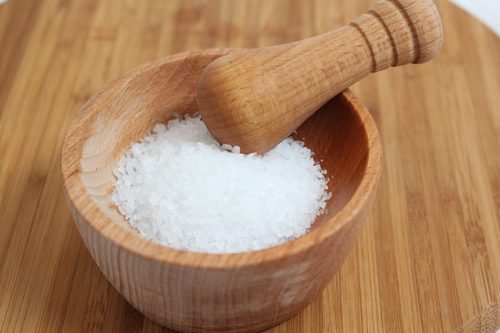Do You Know the Six Foods with the Most Toxins?

Our bodies absorb thousands of toxins every day that come from the foods that we eat. These can be added chemicals, natural toxins, or even the way the foods been modified.
Do you want to know the foods with the most toxins? Learn more in this article.
Having high quantities of toxins in our bodies can cause the following:
- Changes in the intestinal flora
- Change in the immune system
- Fluid retention
- Insomnia
- Poor absorption of nutrients
Even though we can’t do much as far as the food itself is concerned, what we can do is eat foods that have less of these toxins.
Did you know that there are foods that have a very high amount of harmful substances? If you didn’t know this, we’re going to list 6 foods that add toxins to your body.
Foods with the most toxins
As we mentioned earlier, these foods that are high in toxins are harmful, but it doesn’t mean that you have to stop eating them.
Simply eat them in moderation.
It’s important to know that if you have a diet high in toxins, you need to balance it with exercise, fruits and vegetables that help to purify your body and maintain a balance of nutrients.
Do you want to know more? Read: Decrease the toxins in your life with these tricks.
1.Meat
Meat is high in toxins due to the amount of hormones and other substances it contains, such as clembuterol and elbenzopirene.
It has been proven that these additives are carcinogenics. Because of this, they increase your probability of contracting leukemia or stomach tumors.
2. Tuna

Even though tuna is healthy and tasty, it contains high levels of mercury. This can end up degenerating the nervous system, especially in fetuses.
One of the reasons for toxins is due to poor refrigeration and preservatives.
3. Milk
Whole cow’s milk is especially toxic. During the pasteurization process, the milk acquires a considerable quantity of toxins.
Milk, although pasteurized, contains approximately 60 hormones, dioxins, and antibiotics that promote the development of cancer.
4. Corn

Corn is the second food with the highest content of mercury, after seafood.
When the corn is cut and doesn’t dry correctly, it’s contaminated with aflatoxin.
This group of chemical compounds, derived principally from fungus, are in great part the principal causes of cancer and malnutrition in people.
5. Cheese, eggs, and dairy products
The case of cow’s milk is exactly what occurs with these foods.
Dairy products contain the same toxins that their primary ingredient (milk) contains. In addition, they can contain more of these thanks to the other processes that are carried out.
Those that are found on this list are, more than anything, high in fats. Examples are cheddar and ricotta cheese.
6. Canned foods

Canned foods have always been a little bit suspicious because of the chemicals they are used for preservation.
Lately, studies have found that the majority of cans have coatings with traces of bisfenol.
This substance has been known to cause diabetes and obesity.
See this article: The dangers of eating canned food
Avoid and eliminate the accumulation of toxins
It’s true that there are many foods that are high in toxins. Nevertheless, there is also a long and extensive list of foods that serve to eliminate them and purify the body.
Among the indicated we find the following:
- Apples
- Water cress
- Onions
- Olive oil
- Lemons
- Grapes
There are many others. We recommend eating them at each meal to create a balanced diet.
Avoid eating in excess
Whether you’re eating healthy food or junk food, overeating is very harmful to your liver, kidneys and intestines.
When eating too much, it makes our body work doubly hard. It makes it difficult to eliminate toxins and it interferes with digestion.
Control salt

Salt is harmful for the kidneys, so it’s recommended to eat foods low in salt.
Exercise
Exercise is an excellent method to eliminate toxins, thanks to perspiration.
It also keeps you healthy and in shape.
Avoid constipation

This is a way to free yourself of a lot of waste in the body. If you suffer from constipation, be sure and exercise, eat fiber, and drink a lot of water to go to the bathroom regularly.
All cited sources were thoroughly reviewed by our team to ensure their quality, reliability, currency, and validity. The bibliography of this article was considered reliable and of academic or scientific accuracy.
- Boza López, J. (2001). Seguridad alimentaria en la Unión Europea. https://helvia.uco.es/xmlui/handle/10396/3880
- Cross, A. J., Leitzmann, M. F., Gail, M. H., Hollenbeck, A. R., Schatzkin, A., & Sinha, R. (2007). A prospective study of red and processed meat intake in relation to cancer risk. PLoS Medicine, 4(12), e325. https://doi.org/10.1371/journal.pmed.0040325
- Gerstenberger, S. L., Martinson, A., & Kramer, J. L. (2010). An evaluation of mercury concentrations in three brands of canned tuna. Environmental toxicology and chemistry, 29(2), 237–242. https://doi.org/10.1002/etc.32
- Gobierno Peruano. (2016). Guía de Buenas Prácticas Pecuarias en Producción Lechera. Consulta en línea: https://dspacecicco.conacyt.gov.py/jspui/bitstream/123456789/42585/3/Guia-de-buenas-practicas-pecuarias-en-produccion-lechera.pdf
- Magnussen, A., & Parsi, M. A. (2013). Aflatoxins, hepatocellular carcinoma and public health. World journal of gastroenterology, 19(10), 1508–1512. https://doi.org/10.3748/wjg.v19.i10.1508
- Mirmira, P., & Evans-Molina, C. (2014). Bisphenol A, obesity, and type 2 diabetes mellitus: genuine concern or unnecessary preoccupation?. Translational research : the journal of laboratory and clinical medicine, 164(1), 13–21. https://doi.org/10.1016/j.trsl.2014.03.003
This text is provided for informational purposes only and does not replace consultation with a professional. If in doubt, consult your specialist.








